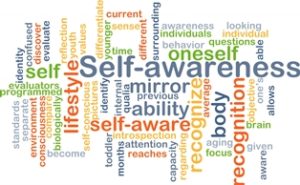Pain walking/running deviant gait – self treat &/or seek expert assistance

Experiencing pain when walking or running can be a complex problem.
Asserting a hypothesis is a systematic way to solve complex problems. A hypothesis is an “if-then statement” or conditional statement which can be tested, accepted, or refuted.

Hypothesis: If you have pain walking and/or running, then gait analysis to determine if there is a gait deviation is needed.
Hypothesis: If there is a gait deviation, then an intervention to alter the gait deviation is needed.

Hypothesis: If you see a gait deviation when walking or running, then intervening to alter the gait deviation will:
- Result in being able to walk or run farther
- Result in being able to walk or run faster
- Prevent injury decrease fall risk
- Look better when walking or running
- Result in needing less adaptive equipment in order to walk or run
The above conditional statements lead to questions. Questions lead to answers but often lead to more questions.

Identifying gait deviation
Can a nonprofessional person identify when gait is deviant? Quite likely, yes. It is easy to determine if a person is limping or walking in a deviant manner. It is like the colloquial expression “you know it when you see it”. However, a deeper analysis is needed to get a better understanding of why there is limp.
The following are a few examples of common specific gait deviations which are associated with musculoskeletal pain syndromes:
- In asymmetrical movement, one side of the body does not move in symmetry with the other side of the body
- Excessive movement of the center of mass up and down, a bouncy gait
- Too long of a step or stride
- Loud foot strike, clomping, and stomping
- An excessive amount of out-toeing or in-toeing
- Excessive lateral pelvic drop hippy-dippy gait or runny way model walk
- There is no daylight between the knees
- Foot strike crosses the mid-line of the body
- Excessive inward rotation of the hip joint and thigh
Our level of self-awareness of how we walk or run varies. Some are very self-aware others not so much. Some individuals have been limping for so long they assume it is normal. This is a situation where viewing a video image of walking or running can automatically increase self-awareness. The potency of the video walking can be magnified when viewed in slow motion. There are times when self-awareness can by itself be therapeutic. An overly simplistic explanation of possible intervention is the self-cue is “see that don’t do that. Consciously avoid moving in a deviant way.

Compensated gait
When there is an abnormality and/or pain when walking or running it automatically results in a compensated gait or deviant gait. Humans have an enormous capacity to make up or compensate. This ability to compensate is automatic, it happens without an explicit conscious thought process.
The following are considerations when automatic gait deviation or gait compensation may not be best and interventions such as the use of adaptive equipment, shoe therapy, shoe inserts, and/or gait training should be considered when:
- Walking/running is too slow can’t get there quick enough
- Walking/running is not burning enough calories to lose bodyweight
- Increased energy expenditure the gait deviation requires impairs function and abilities
- It is difficult to work and carry objects because added weight causes pain and gait deviation
- This leads to unbalanced joint movements increasing the risk of new pain and injury
- Deviation increases the risk of falls or acute injury
- It delays, impairs, or prevents normal healing
- Instinctive gait compensations continue despite having undergone joint replacement surgery
Automatic gait compensation needs to be recognized, analyzed, and attended to in order to determine whether to alter modify; identify alternative compensations, or accept and allow to continue.
Self-treat or seek professional assistance
Is the gait deviation an acquired habit that can respond to gait training and/or intervention?
If there is a history of recent traumatic injury there is a higher probability the gait deviation or compensation can be addressed with an intervention. If there is a history of recent joint surgery or joint replacement surgery, there is a high probability the gait deviation or compensation can be addressed with an intervention. It is appropriate to put forward a hypothesis if intervention is applied then gait deviation can be eliminated or decreased.
Is the observed gait deviation an optimal gait compensation? Is there better compensation? Is the gait deviation related to pre-existing structural impairments and therefore the compensation or gait deviation should be allowed to be continued? Is the gait deviation related to pre-existing structural impairments and are there alternative options to compensate?
Should you seek an expert analysis to identify and intervene?
The following questions can help determine if there are underlying structural impairments and expert analysis by a Physical Therapist is indicated.
- As a little kid did you wear corrective shoes or braces?
- Is there a history of experiencing a traumatic joint injury or broken bone in the lower extremity?
- As far as you know are both your feet the same foot size.
- As far as you know are both your legs the same length.
- Have you ever been accused of having scoliosis?
If you answered yes to any of the above questions, there may be a structural variation that is related to the gait deviations you see. A Physical Therapist can assist in determining if an observed gait deviation or unconscious gait compensation should be allowed because of an underlying structural variation or if there are alternative compensations or deviations to consider using.
Reflection on the above questions can help answer the question of whether self-treatment or seeking professional compensation is needed to solve the problem of pain when walking or running.
“Sometimes asking questions is more important than finding answers”
Robert Jordan's The Wheel of Time: The Eye of the World
A on demand video webinar exploring this topic is available at Plus by Physiopedia entitled “Indications, Benefits, & Barriers of 2D Motion Analysis”
Use this code – “Damien25” for a 30% discount to access this webinar as well as the more than 500 continuing education webinar courses available at Plus by Physiopedia. This is the link http://bit.ly/DAMIEN30 with the 30% discount code embedded.
The information on this website is not intended or implied to be a substitute for professional medical advice, diagnosis or treatment. You are encouraged to perform additional research regarding any information contained on available through this website with other sources and consult with your physician.
Damien Howell Physical Therapy – 804-647-9499 – Fax: 866-879-8591 At-Home, At Office, At Fitness Facility – I come to you, I do home visits Damien@damienhowellpt.com

